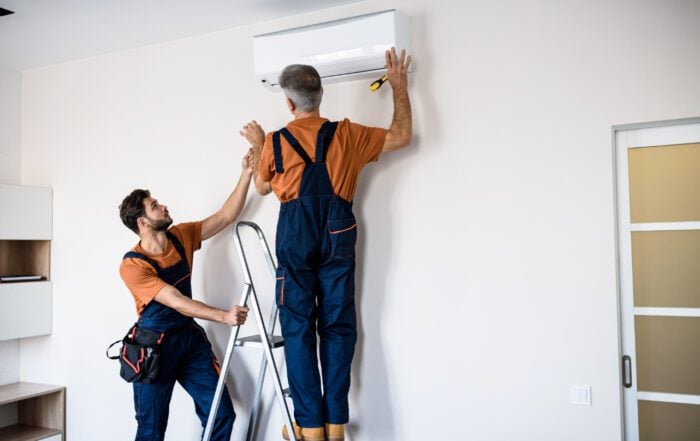If you’re like most Americans, the microwave is a central hub in your home. It’s where you reheat leftovers your family sent home with you from Sunday dinner. It’s the ultimate tool for microwave dinners on busy evenings. And how else would you pop that delicious popcorn required for the perfect movie night? Because they’re such easy and convenient appliances, most of us have become dependent upon them. And that means trouble when you run into microwave failure.
Like everything else, your microwave has a lifespan, and at some point, it will run out. And when it gets to the end of its meal-making journey, it will begin to give you signs so you know to expect the inevitable.
To DIY, or Not to DIY
Many of those who are handy with repairing items may be tempted to start tinkering with the appliance to see if it’s a repairable issue. But when you’re an unlicensed, untrained individual dealing with a device that pulls an electrical current, you’re toying with danger. You should always leave these types of repairs to the professionals – especially when it comes to situations like microwave failure which has the potential to cause a spark and start a fire. And you may also run into the issue of voiding your warranty.
Microwave Failure: What’s the Problem?
Unresponsive Appliance
An unresponsive microwave may mean there’s a tripped circuit breaker. Microwaves pull a lot of energy, so if they run on the same circuit as other appliances, it may have been overloaded. If you have already checked the panel for a flipped breaker and it looks fine, it could be several different problems. It may be a damaged power cord, a bad fuse, or a malfunctioning circuit board – all of which are issues with the microwave itself.
This microwave failure may also be from a natural cause. Have there been any power surges or storms near you? That can cook the wiring in your appliance. And fried wiring can also happen from regular overuse.
Microwave Won’t Start, Won’t Stop, or Stops Suddenly
The microwave may “think” the door isn’t closed. Door switches can break, often from slamming the door closed repetitively over time or from one big slam. When this happens, the microwave can read the door as open when it’s closed or closed when it’s open. And that’s especially dangerous as this can lead to the appliance attempting to cook with the door open.
You may also be looking at a failed transformer, broken touch-pad, or a defective fan motor.
Food Will Not Heat
Microwaving running but not heating? It’s probably the microwave’s magnetron. A magnetron uses a high level of voltage to create microwave frequency (hence the appliance’s name) and cook the food. These can go bad abruptly from the appliance running with nothing inside (like if you run the microwave as a timer instead of using the “Timer” button).
Magnetrons can’t be repaired, but they can be replaced. And if they’re not the culprits of this issue, it may be defective diodes, faulty door switch, or transformer failure.
The Tray Will Not Turn
Most microwaves have a spinning tray in the middle to spin the food for even heat distribution. If it suddenly stops turning, the tray motor has likely worn out or burned up. Typically this is an easy and fairly inexpensive part for a professional repair person to replace.
If the motor is still functioning, it may be an issue with the main circuit board, touchpad, or control panel.
Seeing Sparks
Believe it or not, this is a fairly common issue and doesn’t necessarily mean the microwave’s life is over. It does, however, mean you need to shut off the appliance immediately, unplug it, and inspect it because it’s still a serious problem. It could be a problem with the waveguide cover, diode, rack support, or even the paint from the inside walls.
Sparks can also happen from too much food build up. When food particles cake up, it can lead to overheating and damaging major components. If you haven’t noticed any sparks just yet, make cleaning your microwave a regular habit starting now.
Repair vs. Replacement
Those are your two options when it comes to microwave failure. And the two factors you have to look at when making that decision are 1) the source of the issue and 2) value.
Depending on your brand and model, some parts that often need to be replaced are affordable and easy to get your hands on. That means that taking it in for repair is often an economical solution. Of course, with some issues, the total cost of parts and labor can go beyond the price of a new microwave. So depending on the reason for failure, it may just be best to spring for a replacement.
Then you have to look at the total value of your equipment. If you own a less expensive model (usually something under $100), it’s almost always better to just look into a replacement option.
But if you have a model that’s a little on the pricer end (some can reach upwards of $1000), it may be worth fixing. Just remember: a more expensive microwave will often use more expensive parts – so beware of the repair bill.
Also, consider the age of your appliance. The typical lifespan of a microwave is roughly 9 years. So if you’re looking at a $50 repair for a $200 microwave that only has about another year of life left in it, it probably makes more sense to just replace it.
Of course, sometimes your microwave failure can be deeper than just a faulty appliance. If you think the issue may originate from your electrical system, it’s important to contact a licensed, professional electrician such as Stack. We can help you narrow down the issue and take steps to resolve it quickly.
Have Any Questions?
If this is an emergency please call 440-937-9134.
Otherwise, please feel free to call us or submit this form to schedule an appointment for service or request an estimate. We will contact you shortly!



